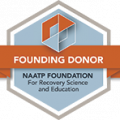Xanax is a drug used to treat anxiety and/or panic disorders. It’s not an opioid – it’s part of a drug class called benzodiazepines, AKA benzos. Xanax is the most frequently prescribed psychoactive drug in America. Treatments vary between 0.25mg and 2mg pills, two or three times a day.
Xanax is also the most widely abused benzo. It’s extremely addictive and is involved in around 16% of all opioid overdoses. A few months ago, the CDC published a Morbidity and Mortality Weekly Report on benzodiazepine overdoses, the first ever to study multistate benzo abuse. From the report:
From April–June 2019 to April–June 2020, overall benzodiazepine deaths increased 42.9% (from 1,004 to 1,435), prescription benzodiazepine deaths increased 21.8% (from 921 to 1,122), and illicit benzodiazepine deaths increased 519.6% (from 51 to 316). During January–June 2020, most (92.7%) benzodiazepine deaths also involved opioids, mainly illicitly manufactured fentanyls (IMFs) (66.7%).
Not only are four Americans dying every single day from benzo overdoses, but the trend shows the count is only rising. That’s why it’s critical to know what Xanax abuse looks like, what Xanax itself looks like, some slang terms it’s referred to as, and how to find help.
If you or someone you know is abusing Xanax, or any substance at all for that matter, please call us today. Xanax detox Kokomo Indiana is here to help.
Key Takeaways
- Xanax is highly addictive and widely misused.
- Xanax abuse has clear physical and behavioral warning signs.
- Xanax comes in multiple strengths and forms, often with recognizable street names..
- Effective treatment requires both medical and mental health support.
What Is Xanax Addiction?
Question: What Is Xanax Addiction?
Answer: Xanax addiction is a dependence on the drug caused by repeated or prolonged use, leading to cravings, tolerance, and withdrawal symptoms when the drug isn’t taken. Because Xanax produces fast-acting calming and euphoric effects, individuals may misuse it to cope with stress or anxiety, eventually becoming physically and psychologically reliant on it.
What Xanax Abuse and Withdrawal Symptoms Look Like
The effects of Xanax Rehab Kokomo take about an hour to kick in, and typically last around six hours. It produces sedative and euphoric effects, making it highly subject to abuse. Signs of Xanax abuse, or of other benzodiazepines, include but are not limited to:
- Extreme drowsiness
- Sluggishness
- Slurred speech
- Impaired movement
- Cognitive impairment
- Nausea and/or vomiting
- Vertigo-like symptoms
- Dry mouth
Individuals showing these signs may benefit from counseling and a range of treatment options, including inpatient care, residential programs, partial hospitalization, intensive outpatient program, outpatient treatment, and outpatient program, depending on their specific needs.
Prolonged abuse of Xanax, or of other benzodiazepines, can cause more severe damage. Some of this damage can be permanent. Effects of prolonged abuse include but are not limited to:
- Depression and/or Anxiety
- Antisocial behavior
- Delirium
- Extreme aggression
- High risk of dementia and/or psychosis
It’s very common for drug abusers to mix Xanax with other drugs, especially with opioids. As mentioned, nearly one in five opioid overdoses involves benzo abuse as well. Because Xanax isn’t as easily recognizable as most other abused drugs, it’s important to know both what it looks like and what nicknames it’s known as among abusers. At a rehab center, case management plays a crucial role in coordinating care and ensuring clients receive comprehensive support when facing the dangers of mixing substances.
Causes and Risk Factors for Xanax Addiction
Xanax addiction doesn’t happen overnight—it’s often the result of a combination of genetic, environmental, and psychological factors. Some individuals may have a genetic predisposition that makes them more vulnerable to developing an addiction, especially if there’s a family history of substance use or mental health concerns. Environmental influences, such as exposure to trauma, chronic stress, or ongoing anxiety, can also increase the risk of Xanax misuse.
People who are prescribed Xanax for anxiety or panic disorders and take it for extended periods, or in higher doses than recommended, are at greater risk of developing dependence. The risk is even higher for those who use Xanax as a way to cope with unresolved trauma or ongoing mental health challenges.
At First City Recovery Center in Kokomo, Indiana, clients receive comprehensive addiction treatment that addresses not only the physical aspects of Xanax addiction but also the underlying mental health issues that often contribute to substance use. By offering a full range of mental health services, First City Recovery Center helps individuals and families in Indiana take steady steps toward lasting recovery and improved mental health.
What Xanax Looks Like (and its Nicknames)
There are four different strength pills of brand-name Xanax. It’s currently manufactured by Pfizer but there are thirteen other pharmaceutical companies that produce generic versions of alprazolam, the main active ingredient in Xanax. In total there are 44 different generic alprazolam tablets, when accounting for the different strengths.
Most Xanax tablets are immediate-release, but it’s important to note that some benzodiazepines are available in extended release formulations.
Here is what the four brand-name Xanax pills look like:
- 25mg: White, oval-shaped tablet, says “XANAX 0.25” on one side.
- 5mg: Peach, oval-shaped tablet, says “XANAX 0.5” on one side.
- 1mg: Blue, oval-shaped tablet, says “XANAX 1.0” on one side.
- 2mg: White, rectangular tablet with round edges, says “XANAX” on one side, “2” on the other.
The 2mg pills are often called “Xanax bars” or “Xanny bars”. However, there are plenty of other nicknames for Xanax on the street. The following is an incomplete list, but we’ve included as many nicknames as we could discover.
Xanax has developed many different nicknames, including:
- Xanny/Xannies
- Bars
- Handlebars
- Bike Parts (or Bicycle Parts)
- White Girls (or White Boys)
- Footballs
- Totem Poles
- Planks
- Upjohns
- Benzos
- X (although ecstasy is also commonly called ‘X’)
Xanax abuse is growing in popularity every single day. Recognizing the signs and symptoms of abuse, as well as the drug itself and what it’s called, can be critical in trying to help an abuser. While the goal of anyone trying to recover in First City Recovery, or help someone recover, is to achieve sobriety, it’s quite dangerous to stop abusing drugs without medical supervision. That’s because of withdrawal and all the nasty symptoms it can bring.
Co-Occurring Mental Health Conditions and Xanax Addiction
Many people struggling with Xanax addiction also face co-occurring mental health conditions, such as anxiety, depression, or post-traumatic stress disorder (PTSD). These mental health challenges can make it even harder to break free from addictive behaviors, as individuals may use Xanax to self-medicate or manage overwhelming emotions. Unfortunately, ongoing Xanax use can worsen these mental health conditions, creating a cycle that’s difficult to escape without professional support.
First City Recovery Center offers residential treatment programs that provide a structured environment and access to medical Xanax detox, helping clients safely manage withdrawal symptoms while addressing both addiction and co-occurring mental health concerns. For those who need flexibility, intensive outpatient and outpatient services are available, allowing clients to receive evidence-based care while maintaining their daily responsibilities.
The Mental Health Services Administration recommends a comprehensive approach to treatment, including cognitive behavioral therapy, group therapy, and educational support, to help individuals build healthy coping skills and achieve visible recovery. At First City Recovery Kokomo, clients benefit from a full continuum of care designed to support both their mental health and recovery journey, ensuring they have the tools and support needed for long-term success.
Help with Xanax Abuse/Addiction Treatment
Nobody has to fight addiction alone. There are countless support systems beyond friends and family that can assist in the transition from abuse to sobriety. First City Recovery Kokomo, Indiana is one of the best of those support systems, offering a variety of program options and assistance with verifying insurance coverage for those seeking help. Call us today to discover just how many options there are to help yourself or someone you love.
Frequently Asked Questions
1. What makes Xanax so addictive?
Xanax produces fast-acting sedative and euphoric effects. Over time, the brain becomes dependent on these sensations, especially when the drug is taken in higher doses or more frequently than prescribed.
2. Can Xanax withdrawal be dangerous?
Yes. Xanax withdrawal can cause severe symptoms such as seizures, panic attacks, hallucinations, and extreme anxiety. Medical detox is strongly recommended for safety.
3. How can I tell if someone is abusing Xanax?
Look for signs like slurred speech, heavy drowsiness, poor coordination, irritability, secretive behavior, or mixing pills with alcohol or other drugs. Sudden personality changes may also indicate misuse.
4. Is it safe to stop taking Xanax suddenly?
No. Stopping abruptly can trigger life-threatening withdrawal symptoms. Tapering under medical supervision is the safest approach.
5. What treatment options are available for Xanax addiction?
Treatment may include medical detox, residential treatment, partial hospitalization, intensive outpatient programs, therapy for co-occurring disorders, and long-term aftercare support. First City Recovery Center provides all these levels of care.
















